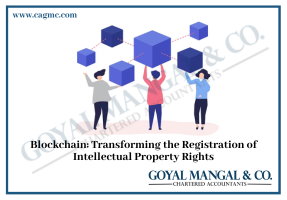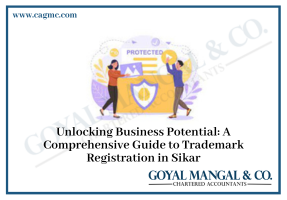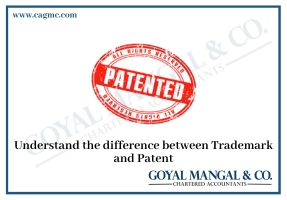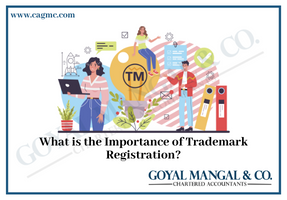 India is a mixed market and has many industries that operate on the free market concept. The competition in the market system is extreme. To thrive in the open market, any business needs to build brand recognition and equity. The easiest way to do this is through trademarks. A Trademark is defined as a mark capable of being reproduced visually and capable of differentiating one person’s goods or services from those of another and may include the shape of items, their packaging, and color combination.
India is a mixed market and has many industries that operate on the free market concept. The competition in the market system is extreme. To thrive in the open market, any business needs to build brand recognition and equity. The easiest way to do this is through trademarks. A Trademark is defined as a mark capable of being reproduced visually and capable of differentiating one person’s goods or services from those of another and may include the shape of items, their packaging, and color combination.
Once a trademark is registered and verified, no one other than the owner of the trademark’s intellectual rights has the exclusive right to use the trademark in relation and vice versa. The exclusive right to use the trademark, however, is subject to certain criteria and limits. In this article, we will discuss trademark Infringement In India.
|
Table of Content |
Short Glimpse
The Trade Marks Act, 1999 (the Act) is a piece of legislation that protects Trademarks in India. The law establishes rules for registration, protection, and penalties for trademark infringement. Trademarks have the status of intellectual property worldwide. There are many organizations, both international and national, that seek to protect intellectual property such as trademarks.
In India, the organization that deals with the protection of trademarks is the Indian Patent Office administered by the Controller General of Patents, Designs, and Trademarks. Simply put, trademark infringement is the unauthorized use of a trademark that is identical or deceptively similar to a registered trademark. Deceptively similar here means that when the average consumer looks at the mark, it is likely to mislead him as to the origin of the goods or services.
Meaning of Trademark Infringement in India
According to Section 29 of the Trademarks Act, 1999, Trademark Infringement is defined as the use of a mark that is identical to or confusingly similar to the trademark in connection to the products or services for which the trademark is registered by a person who is not the registered proprietor. It is simply the unauthorized use of the exclusive rights associated with a registered trademark without the owner’s or licensees’ consent.
The courts have often presumed that the resemblance between two marks and the types of products and services leads to confusion in the public’s perceptions. They could improperly profit from the well-earned reputation of the registered brand. It must be demonstrated that the infringing trademark is confusingly similar to or identical to the registered trademark in order for a claim of trademark infringement against a person to be successful.
Types of Trademark Infringement
When investigating Trademark Infringement, it is important to know that there are two types of infringement:
Direct Infringement
Direct infringement is defined by Section 29 of the Act. There are several elements that must be met for direct infringement to occur, as follows:
- Use by an unauthorized person: This means that trademark infringement only occurs when the trademark is used by a person who is not authorized by the registered trademark holder. If the mark is used with the permission of the owner of the registered trademark, it is not an infringement.
- Identical or Deceptively Similar: A trademark used by an unauthorized person must be either identical to or deceptively similar to a registered trademark. The term “deceptively similar” here merely means that an ordinary consumer “might” be confused between the marks and think they are identical.
- Registered Trademark: The Act extends protection only to trademarks that have been registered in the Indian Registry of Trademarks. In cases of infringement of an unregistered mark, common law is used to settle disputes. It is a tort law that is used where there is harm or damage to the good name associated with the activities of another person or group of persons.
- Class of Goods or Services: In the case of trademark infringement, the unauthorized use of the mark must be used to promote goods or services that fall within the same class as the registered trademark.
Indirect Infringement
Unlike direct infringement, the law does not contain any provisions that specifically deal with indirect infringement. This does not mean that there is no liability for indirect infringement. The principle and application of indirect infringement follow the principle of universal law. It makes liable not only the principal infringer but also anyone who induces or causes this direct offender to commit an infringement. There are two types of indirect infringement:
- Vicarious Liability: Under Section 114 of the Act, if a company commits an offense under this Act, the entire company is liable. Therefore, not only the principal infringer but every person responsible for the company, except a person who acted in good faith and without knowledge of the infringement, will be liable for indirect infringement.
- Cooperation with Infringement: There are only three basic elements of complicity in infringement: When a person knows of the infringement When a person significantly contributes to the direct infringement or induces the principal infringer to commit the wrongful act In the case of complicity in infringement, there is no exception because there is no chance that the contributing infringer would act in good faith.
When can a person be considered as Infringing a Trademark?
A registered trademark is considered infringed in the following situations:
- If the disputed mark is identical or deceptively similar to a registered trademark and relates to the same or similar goods or services.
- If an identical or similar mark is likely to cause confusion in the minds of the general public because of its association with the registered trademark.
- If the registered trademark is used as part of the trade name or business plan for the goods and services for which the trademark is registered.
- If the trademark is advertised, and as a result, it unfairly favors, is contrary to fair practice, or damages the distinctiveness and reputation of the registered trademark.
- If the registered trademark is used in material intended for the packaging or labeling of other goods or as commercial paper without the proper consent of the registered user.
What does not amount to the Infringement of Trademarks in India?
Section 30 of the Trade Marks Act, 1999 sets out certain conditions under which trademark infringement cannot be claimed. Such terms can be used by the alleged infringer as a defense in trademark infringement suits and thus avoid liability. These conditions include:
- When any person uses a trademark in accordance with the fair practice in industrial or commercial matters,
- Unless such use is aimed at obtaining an undue advantage or is shown to damage the distinctiveness or reputation of the trademark,
- Whenever any trademark is used to designate the kind, quality, quantity, intended purpose, value, geographical origin, time of manufacture of goods or provision of services, or any other characteristics of goods or services,
- When trademarks are registered, there are certain instances where they are subject to certain conditions and restrictions. Whenever the alleged infringement falls within these limitations, then it is not a case of trademark infringement.
- Whenever the use of a trademark is in accordance with an authorized use by the original owner who has not subsequently removed or erased it, such use cannot be considered an infringement.
- Use of the trademark in relation to parts and accessories
- Use of identical or similar trademarks
Penalties for Trademark Infringement in India
In India, trademark infringement is a cognizable offense which means that the infringer can face criminal prosecution along with civil charges. Indian law also does not require a trademark to be registered to initiate civil or criminal proceedings. As mentioned earlier, this is due to the common law principle that issues. In the event of trademark infringement or unauthorized use, the court may grant the following remedies:
- Temporary Injunction
- Permanent Injunction
- Damage
- Profits account (damages in the number of profits obtained from the illegal act)
- Destruction of goods using an infringing trademark
- Costs of legal proceedings
In the case of criminal proceedings, the court shall determine the following penalty:
- Imprisonment for a period of at least six months, which may be extended to three years
- The fine, which is not less than Rs 50,000, can go up to Rs 2 million
Meaning of Passing-Off
Passing off is recognized as a general tort used to protect and enforce unregistered trademarks in India. Like trademark protection, passing off also prevents a person from misrepresenting their goods and services as another person’s goods and services. The concept of handover has emerged in recent years. It expanded its scope from goods to businesses and services. Today, it is even applied to many forms of unfair trading and competition.
There are three elements of passing, popularly known as the classic trinity. These include reputation, misrepresentation, and damage to reputation. The common law courts have come up with several basic characteristics of extradition, which include the following:
- Distortion
- Made by a person in Business
- For potential or final consumers of Goods and Services
- Damage to another person’s business or Goodwill.
- It causes actual harm to the person who filed the lawsuit.
Conclusion
Over time, trademark law has changed to a great extent and now provides protection to the trademark owner’s trademark at every stage. As technology and communication advance, the law expects users to be reasonably familiar with other trademarks before registering their own technology and communication advance, the law expects users to be reasonably familiar with other trademarks before registering their own. No one can even use a similar mark that would deceive or confuse customers. Trademark owners must be more aware of the existence of similar marks, even across national borders.







